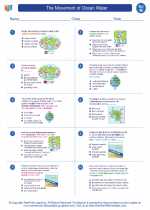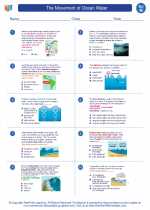Hail
Hail is a type of precipitation that consists of small, round pellets of ice. It is formed within strong thunderstorms when updrafts carry raindrops upward into extremely cold areas of the atmosphere, where they freeze into ice. These ice pellets can grow in size as they are repeatedly carried up and down within the storm's updrafts, eventually becoming heavy enough to fall to the ground.
Formation of Hail
1. Updrafts within a thunderstorm carry raindrops upward into the cold upper atmosphere.
2. The raindrops freeze into tiny ice particles.
3. These ice particles are then carried up and down within the storm, accumulating layers of ice and growing in size.
4. When the hailstones become too heavy for the updrafts to support, they fall to the ground.
Characteristics of Hail
- Hailstones can vary in size, from tiny pellets to large, golf ball-sized stones.
- They are typically round or irregularly shaped, depending on the conditions within the storm.
- Hail can cause damage to crops, vehicles, and buildings when it falls with enough force.
Study Guide
- What is hail and how is it formed?
- What are the characteristics of hail?
- What are the potential impacts of hail?
- How does hail differ from other forms of precipitation, such as snow or sleet?
- What safety precautions should be taken during a hailstorm?
It's important to understand the formation, characteristics, and potential impacts of hail, as well as the safety measures to take during a hailstorm. This knowledge can help individuals and communities prepare for and respond to severe weather events involving hail.
.◂Science Worksheets and Study Guides Eighth Grade. The Movement of Ocean Water

 Worksheet/Answer key
Worksheet/Answer key
 Worksheet/Answer key
Worksheet/Answer key
 Worksheet/Answer key
Worksheet/Answer key
 Vocabulary/Answer key
Vocabulary/Answer key
 Vocabulary/Answer key
Vocabulary/Answer key
